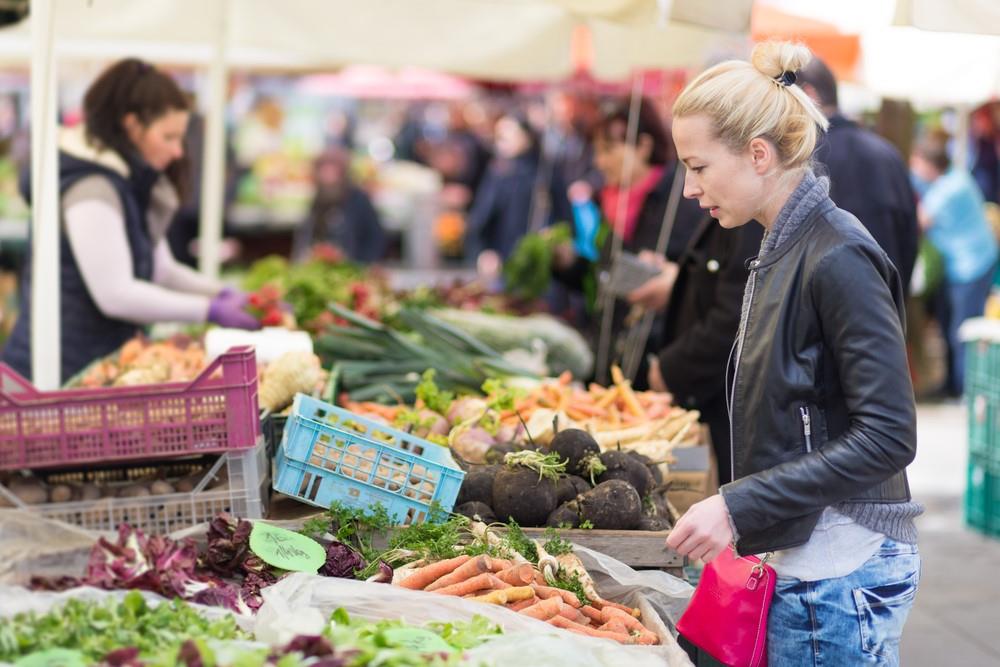




FAO reports
As cities continue to grow, the opportunity to make them more sustainable increases
Good urban planning, including encouraging the creation of green spaces and sustainable food systems, can have a positive effect on food security and nutrition. It can also help improve the livelihoods and well-being of people in urban and peri-urban communities. ©Roschetzky Photography/shutterstock.com
09/16/2020
More than half of the world’s population now lives in cities. According to forecasts, this proportion will increase to 68% by 2050, making urbanization one of the global trends with the greatest transformative capacity.
Cities are already responsible for 70% of the world’s waste and they consume almost 80% of the world’s energy. While rapid urbanization has been a catalyst for innovative solutions in many areas, such as housing, transportation and infrastructure, one critical element is often overlooked: food security and nutrition.
Unfortunately, city life often leads to poor eating habits. Urban areas are also a major source of food waste. On the other hand, urbanization is occurring at the expense of natural resources and green spaces, which increases the vulnerability of urban communities to the effects of climate change. If we want to create healthy and sustainable cities for future generations, we will have to reconsider the way our cities operate. FAO’s Urban Food Agenda supports global policymakers to incorporate food systems into urban planning.
Here are five ways to make cities healthier and more sustainable.
1. Promote urban agriculture
When thinking about agriculture, rural areas come to mind for almost everyone. But did you know that more than 800 million people practice urban agriculture around the world?
By keeping agricultural land in urban areas we can shorten supply chains and therefore reduce the amount of CO2 emitted during the transportation of food from rural to urban areas. By producing and selling more fresh food within your city, you can reduce the environmental impact of food distribution, increase opportunities for inclusive local supply chains, and improve access to nutritious foods, such as example through farmers markets.
From the city of Medellín, in Colombia, FAO has provided support to the departments of Nariño, Antioquía and Boyacá for the creation of community gardens. More than 7,500 families have benefited from these gardens, who can now grow their own food and even sell the surplus. The project was so successful that Colombia is now developing a series of political, legislative and government initiatives to promote similar plans throughout the country.


Left: Composting initiatives can help repurpose discarded food. ©lomiso/shutterstock.com. Right: Urban garden in Honolulu. ©Eric Broder Van Dyke/ shutterstock.com
2. Promote healthy diets
The types of foods available and their affordability greatly influence lifestyles and eating habits. In cities where there is a wide variety of fast and convenience foods, the foods available are often high in calories and highly processed. This is a growing trend. In lower middle-income countries, consumption of processed foods of low nutritional value increased by 5.45% per year between 1998 and 2012. National and municipal governments in developing countries face the problem of having to combat not only malnutrition, but also the health effects of obesity, which is increasing at an alarming rate.
However, all cities can play a greater role in ensuring a healthy diet. In 2014, Singapore took the opportunity to evaluate its food outlets and launch the Healthier Dining Programme. A subsidy scheme encouraged food operators to use healthier ingredients, such as oils with lower saturated fat content, and to include lower-calorie meals on the menu. After just over a year, the offering of healthier meals had doubled.
3. Reduce food waste and manage food waste
Urban populations receive up to 70% of the world’s food supply, but much of this food is wasted. Although the causes of this waste vary from one region of the world to another, poor food planning, inadequate packaging, incorrect storage and cultural habits generally contribute to the problem.
Additionally, food waste that is not recycled or reused fills landfills. There it decomposes and generates methane, a greenhouse gas that is more harmful to the planet than CO2. This implies not only a waste of food, but also of energy, money and natural resources, such as land or water used to produce and process food. Municipal measures aimed at recovering safe and nutritious food and redistributing it through charities and food banks, composting or using discarded food to generate energy can greatly help reduce food waste.
In the municipality of Lima, Peru, FAO has helped create a food coordination consultative group to address issues of food loss and waste. One of the group’s initiatives was the formation of a municipal food waste task force that has created a composting center for biomass waste management. Thanks to this, the amount of organic waste disposed of in landfills and through city sewers has been greatly reduced.

Providing access to fresh, locally sourced food supplies in cities is essential to ensuring healthy eating. ©Matej Kastelic/shutterstock.com
4. Promote green spaces to establish healthier environments and better lifestyles
As urban areas continue to expand, green spaces disappear. Beyond their aesthetic appeal, trees and green areas are essential for improving air quality, softening urban temperatures, encouraging physical exercise and improving general health. Air pollution, increased local temperatures and sedentary lifestyles can increase the probability of suffering from cardiovascular and respiratory diseases as well as obesity, in addition to promoting the spread of new pathogens.
Food systems must be planned and managed together with the green environment, in order to curb pollution and promote healthy diets and physical exercise. In the city of Los Angeles (United States of America), for example, researchers have found that the more parks there are within 500 meters of a child’s home, the lower their body mass index (BMI) will be at 18 years old.
5. Reconnect cities with surrounding rural areas
Cities and urban areas do not operate in isolation from rural areas. In fact, they are very dependent on the rural regions that surround them. They rely heavily on neighboring rural areas for food and labour, water supply and food waste disposal. In the city of Kisumu, Kenya, the Food Coordination Consultative Group, which is a stakeholder platform bringing together urban and rural actors, is taking a broader approach and reconnecting the city with the surrounding region in planning its food system. . This helps ensure the supply of healthy, safe and nutritious food, while promoting rural farmers’ access to markets and creating jobs within the food system.
It is often said that the battle to achieve the Sustainable Development Goals (SDGs) will be won or lost in cities, which is why SDG 11 (“Make cities and human settlements inclusive, safe, resilient and sustainable”) is so important. FAO’s Urban Food Agenda helps governments and institutions bridge the divide between rural and urban areas and promote the idea of sustainability of food systems. If we can do this and continue to drive urban innovation in thoughtful and innovative ways, we can ensure that “no one and no place” is left behind.
Links
More information
Editor’s note: This article is an updated version of the story originally published on February 11, 2020.